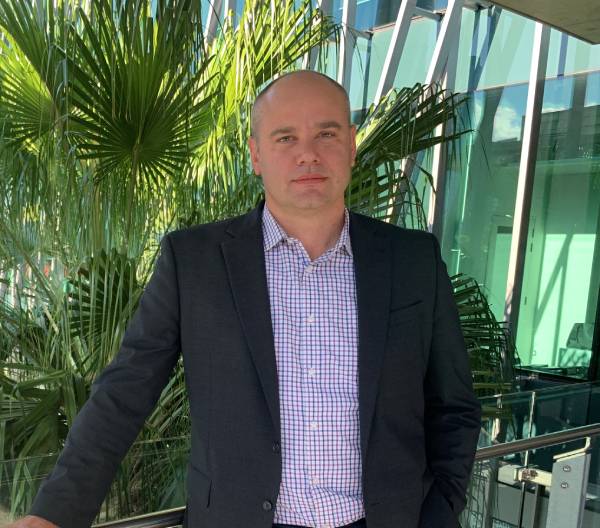Preparing the workforce of the future: Part 1
As part of our Future Workforce Digital Discovery Series, we are running a 3-part series of Q&A articles that explore the future skills needs for the resources sector. We spoke with several industry leaders to find out what changes are coming, and how prepared we are as an industry to meet the challenges ahead.
Part 1 of the series examines the broader context of the future outlook of the sector, and how well-positioned the sector is to deal with change.

Rithin Payyanadan MAusIMM
Mining Lead, Yokogawa
What changes do you expect to see in the industry over the next decade?
Although some miners have adapted business models to be more profit rather than volume based, we expect greater momentum in the next decade. As demand weakens, costs increase and ore grades decline, pressures on marginal or inefficient operations will come to bear. Those who don’t invest in change will quickly fall by the wayside.
Sustainability and decarbonisation pressures will increase as public scrutiny grows further. More responsible mining approaches are required to remove negativity surrounding the industry, with a greater need to demonstrate steps being taken and outcomes achieved.
It’s clear that technology has a more significant role in the evolution of mining, not only for performance improvement, safety and security, but also for reporting. Accessing data from the field and the process in general can (if implemented correctly) improve overall outcomes. However, greater data and touch points can increase cyber security risk, a single element in the broader need to improve resilience models.
Personnel challenges will increase as experienced operators retire, migration to cities increases and new talent is drawn to more ‘attractive’ careers. Mining has made huge advances in addressing this issue, but there is still a gap. Without suitable strategies and supporting technology the industry risks stagnation.
How can the current workforce best prepare for those changes?
It can be challenging for the mining workforce to find time to develop new skills to meet current and future challenges, due to ongoing operational issues, plus budget and resource limitations. To do so would require significant buy-in from employers and staff to establish a two-way mechanism for developing future oriented programs, including personnel being proactive in developing their own skill sets.
Resource limitations will always remain but are not unsurmountable. A broader focus on the development of more multi-disciplined roles with a mentoring expectation has both short- and long-term benefits of increasing knowledge and expertise across the business. This must be a carefully devised and managed program, which may not be a one-size-fits-all solution. Active encouragement and reward of employees must be ongoing, something which can help to address some of the demographic issues miners also face of attracting new and upcoming talent.
Supplementing plant performance and workforce development through technology adoption for both operational and maintenance requirements will also play a strong role. Through capture of best practice principles, procedures can be framed to improve decision making and responsiveness. Tapping into best practice principles from other industries, as unlikely as it may seem, also provides an opportunity to develop new and highly complementary skills.

Adrian Beer FAusIMM
Chief Executive Officer, METS Ignited Australia Limited
To answer the two questions, I need to provide some context to my response. We hear the term ‘digital transformation’ bandied around the sector, often by technology vendors (admitting that I have some history with two of the world’s biggest), but most of the time the focus is drawn to the term digital and not transformation.
I make this point because there are two stages of technology adoption in the resources sector. The first relates to the technology present in existing operations that were constructed during the long run industry resource boom that spanned over two or even three ‘traditional’ seven-year cycles. During this time we saw significant investment in automation and digital technologies within projects that were constructed during this period, and in the latter half of the cycle (the early part of the 2000s) we started to see a system approach to design.
It is important to note this backdrop because it enabled operations, and the companies that owned these operations, to embrace change, and therefore bring new ideas or different approaches to their workforces and methodologies. Alternatively, for those that invested heavily in a highly automated version of the current status quo, they have limited ability to change their operating mode, and are locked in for the life of mine, the production period of their capital investment commitment.
What changes do you expect to see in the industry over the next decade?
When we look ahead, the most exciting opportunity for our future workforce is in STEM, where we will see a dramatic increase in cross-industry collaboration within the resources sector. The advances in data, analytics, machine learning and artificial intelligence allow industry experts to evaluate much larger volumes of information to gain specific insight relative to their area of expertise, freeing up the capacity to then share and cross reference this specific domain insight with peers from other related industry sectors. This helps accelerate learning and gain greater insight and knowledge at a far greater rate than before.
What will be required of the leaders of tomorrow?
Tomorrow’s leaders must learn to deal with a matrix of domain expertise. We have to embrace different perspectives and realise there is value to collaboration between different domains. Without losing respect for history and tradition, we also must embrace new and different perspectives. Finding that balance is hard, and often difficult in an industry steeped in tradition.
For our new leaders, they must be curious and brave, willing to embrace a challenging sector. I think about IMARC last year and the protesters outside, who challenge our industry about our role in the environment, yet inside we are addressing exactly that. Our future leaders have to learn how to overcome that communication breakdown and embrace the future minds of our next generation to be part of the solution.
Stay tuned for the next article in our series where we ask industry leaders Peta Libby (Digirock), Giles Lenz (Roy Hill) and Mike Erickson (AngloGold Ashanti) the skills needed for future resources professionals.
